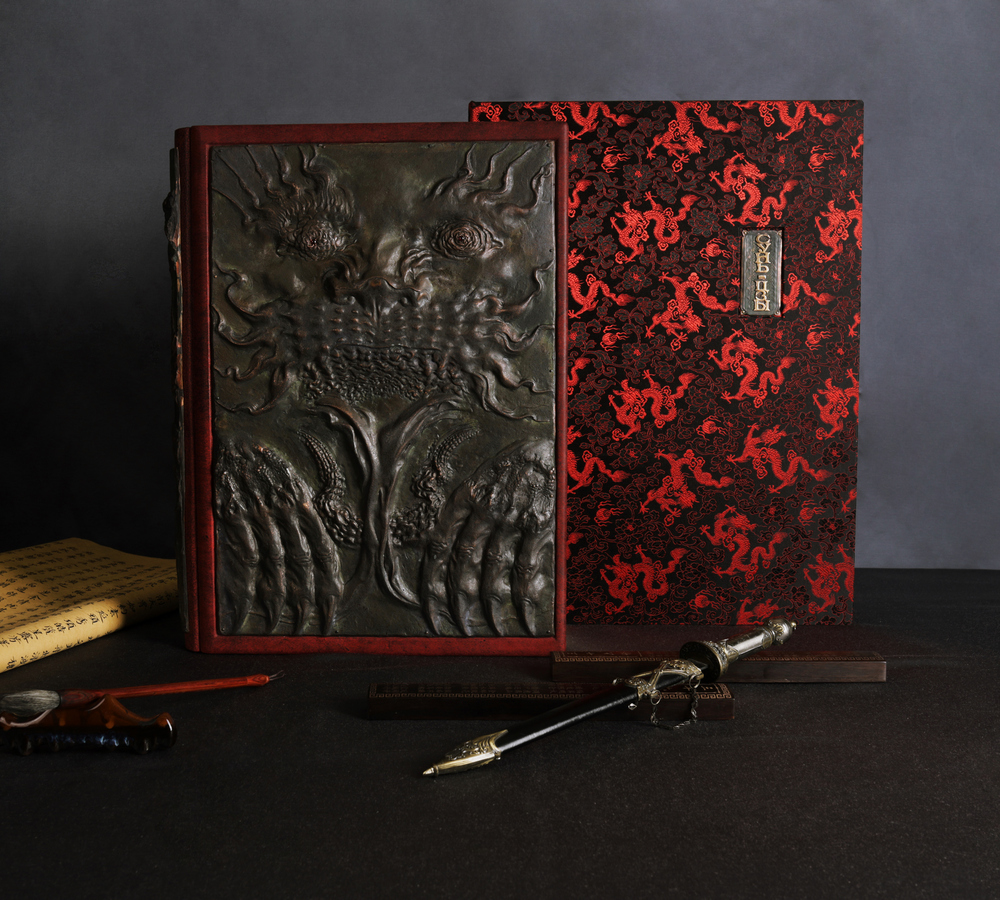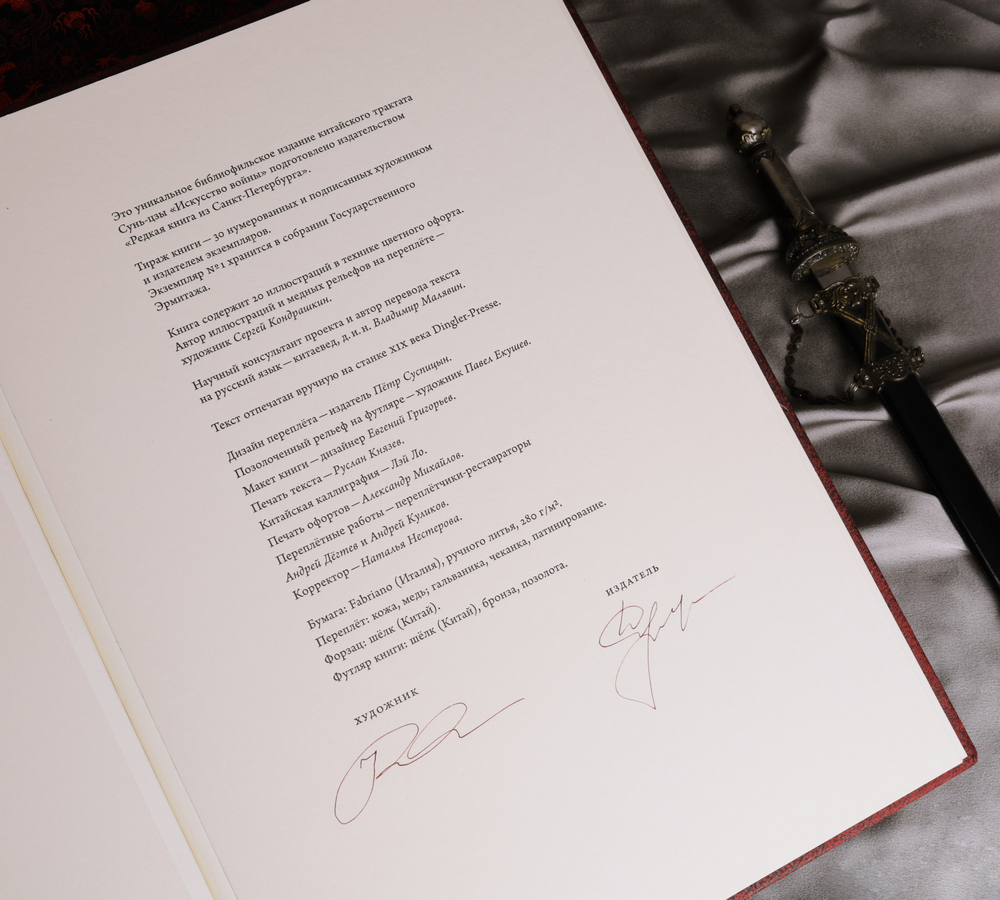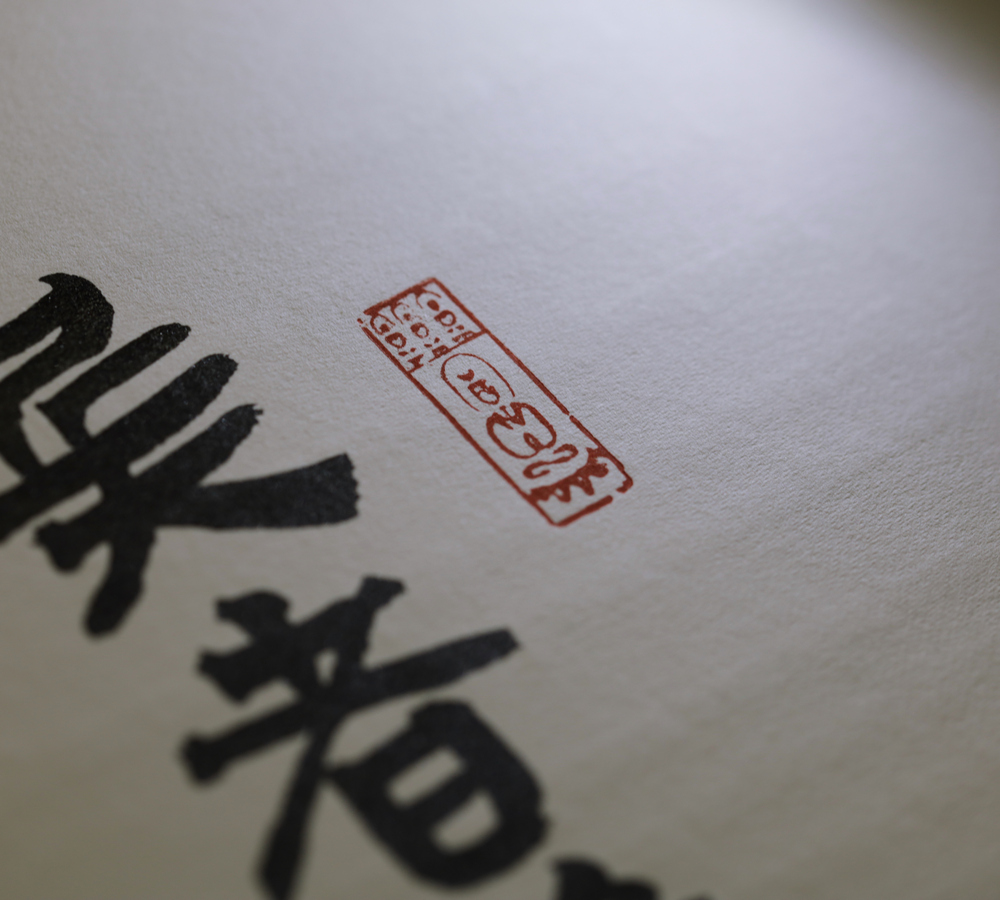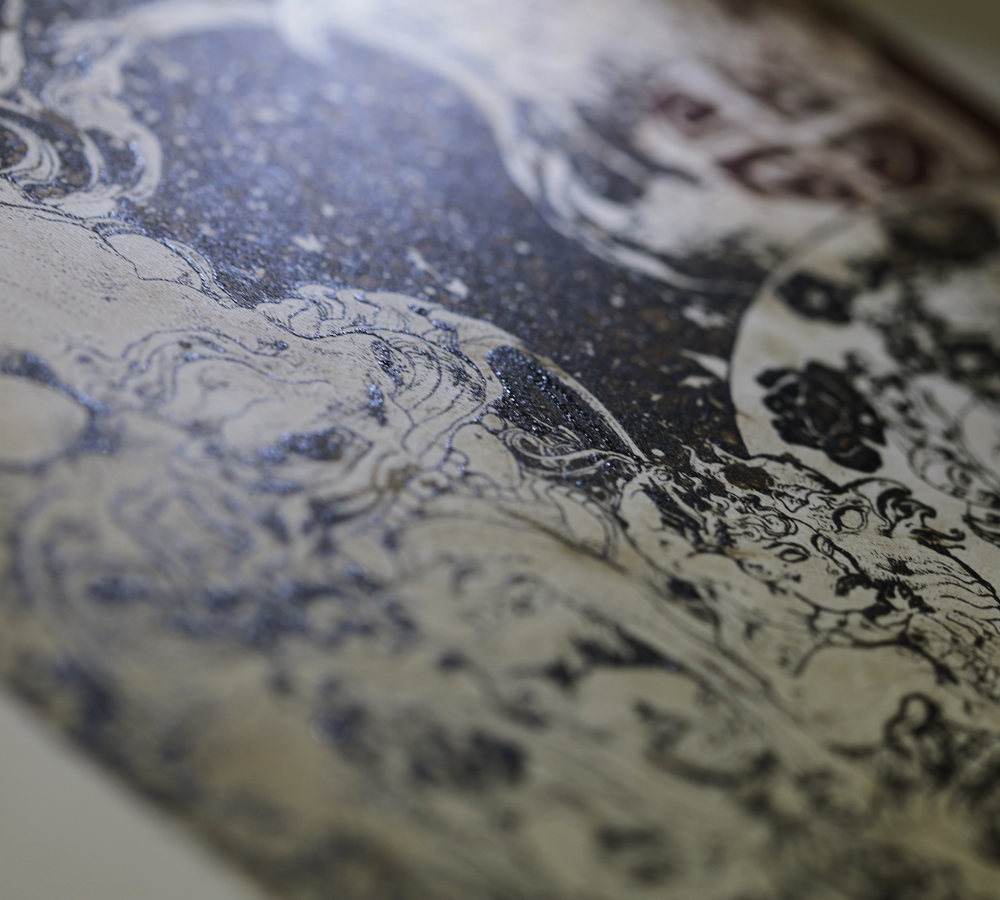THE ART OF WAR
Ancient China’s first treatise on warfare. A manual written by the outstanding general Sun Tzu that contains precisely formulated principles of strategy and tactics for waging war. The book continues a series of publications devoted to Chinese military craft.

Sculptor and graphic artist. His graphic works are marked by particularly fine drawing and precise detail work. Taught sculpture and drawing at the Art Institute of the city of Chengdu, capital of China's Sichuan province. Participant in many exhibitions in Russia and abroad, including over 20 personal ones. Member of the Saint Petersburg Artists’ Union.
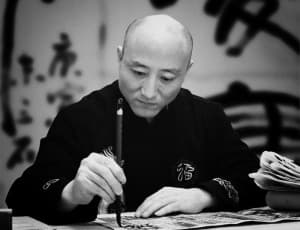
An acknowledged master of calligraphy, he has made an immense contribution to the development and propagation of this art form. Began practising calligraphy at the age of 13. Trained under one of the most renowned contemporary calligraphers, Yang Hong. He teaches at the Chieng Neng Li Russian-Chinese Centre in Saint Petersburg.
Additional information
Details of the creation of this masterpiece
-
Year of publication:2021
-
Number of pages:122 pages
-
Dimensions:550×370 mm
-
Paper:Fabriano (Italy), 280 g/m², handmade
The treatise The Art of War had a substantial influence on the whole of military practice in the East. It is reckoned to be the first text to contain precise guidance on the strategy and tactics for waging war. It was written by general Sun Tzu of the state of Wu during the reign of its king Helü (514-495 BC). It is Sun Tzu who is credited with Wu’s impressive military successes.
The Art of War has been quoted by leading military theorists in China from Wu Qi right up to Mao Tse-Tung. In the West, the book aroused constant discussions and passionate philosophical debates, capturing the attention of highly influential figures in a range of fields. The treatise, first translated by a French missionary around two and a half centuries ago, was part of Napoleon’s campaign library.

Work on the publication of Sun Tzu’s Art of War began in January 2020. The first copy was completed in May 2021.
Participants in the work on this publication:
Creator of the illustrations and copper reliefs on the cover — Sergei Kondrashkin
Scholarly consultant to the project and author of the Russian translation — Vladimir Maliavin
Design of the cover — Piotr Suspitsyn
Gilding of the relief on the cover — Pavel Yekushev
Layout — Evgeny Grigoryev
Printing of the Russian text — Ruslan Knyazev
Chinese calligraphy — Luo Lei
Printing of the etchings — Alexander Mikhailov
Binding work — Andrei Degtev, Andrei Kulikov
Proof-reading — Natalia Nesterova
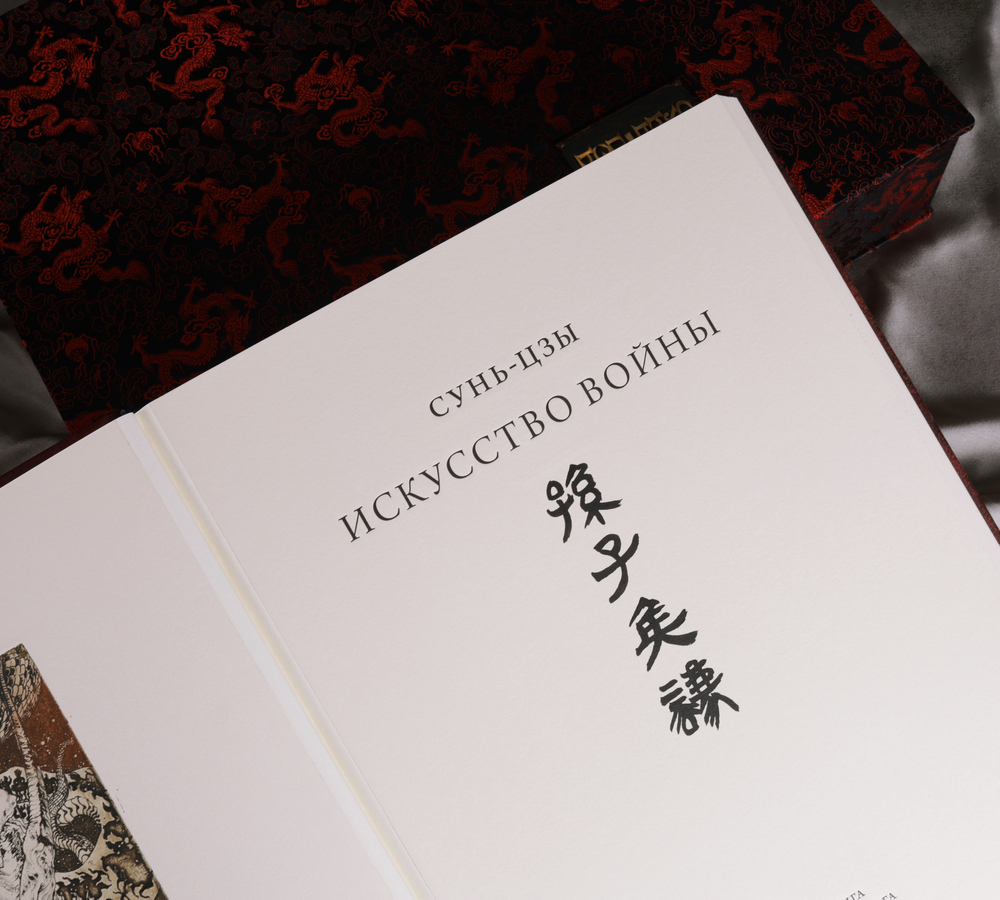
The brilliant general’s all-encompassing ideas include the following principles:
1. War means losses. Therefore, the diplomatic approach to settling a conflict is extremely important.
2. Self-control. Emotional instability leads to disaster. A general should be restrained and trust in common sense.
3. Controlling the enemy, creating the opportunity for an easy victory. An army should always remain active, even when engaged in defence, so as to create and exploit a moment of tactical advantage.
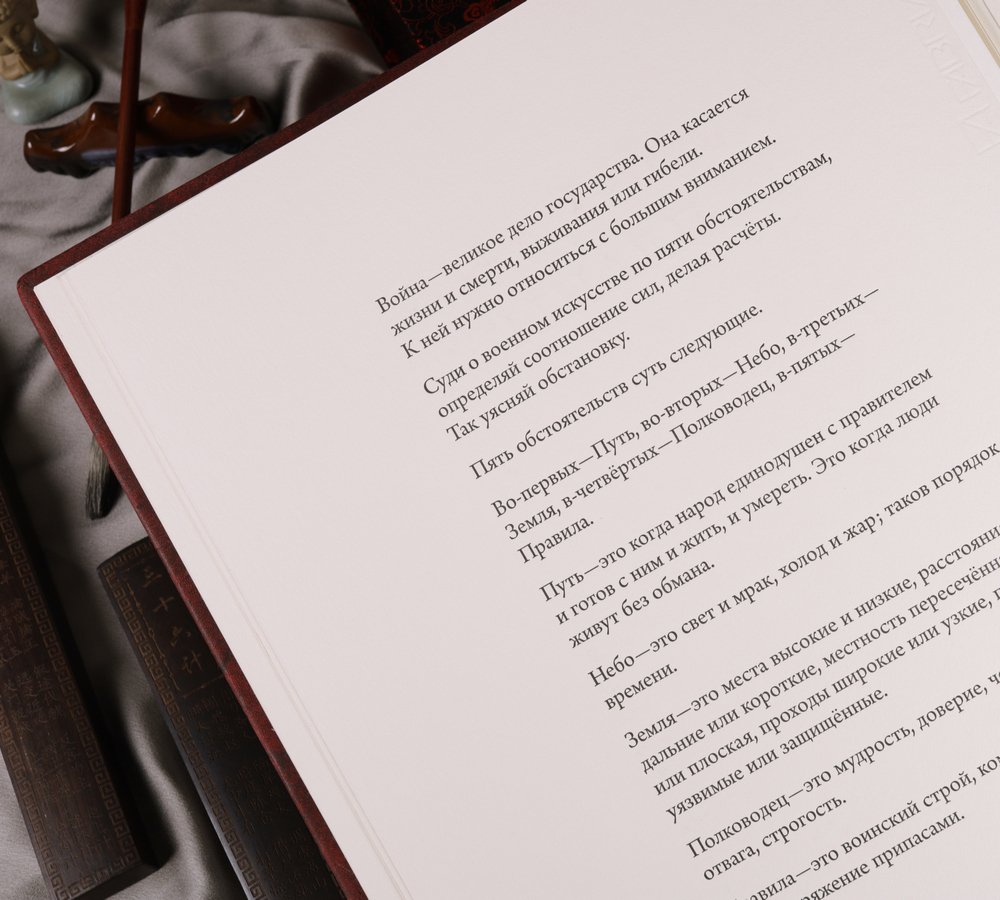
4. The main thing in war is not good luck but possessing information.
5. Precise organization, discipline and obedient forces. When men are well trained, properly fed, clothed and equipped, they will fight fiercely.
The translation used in the creation of the book was made by the Sinologist Vladimir Maliavin, a Doctor of Historical Sciences.
The text of the treatise was printed on a 19th-century Dingler hand press.
The edition also includes original calligraphy created by a master of the Chinese version of that art form, Luo Lei.

The expressive, compositionally complex, multifaceted pictures reflect the scope of Sun Tzu’s military philosophy. The basis is the artist’s creative method is one of the four elements. Each of the illustrations is associated with an outburst. In place of fire intrinsic to war, Kondrashkin chose water. Belligerent dragons, serpents and sorcerers born of the watery element become the key to an emotional perception of the text, revealing the philosophical essence of Sun Tzu’s work: war is fire, but it is the rational thinker who emerges victorious — someone who has a feeling for the fiery element (the illustrations are framed with fire, as it were) yet does not succumb to it, being of a different sort.
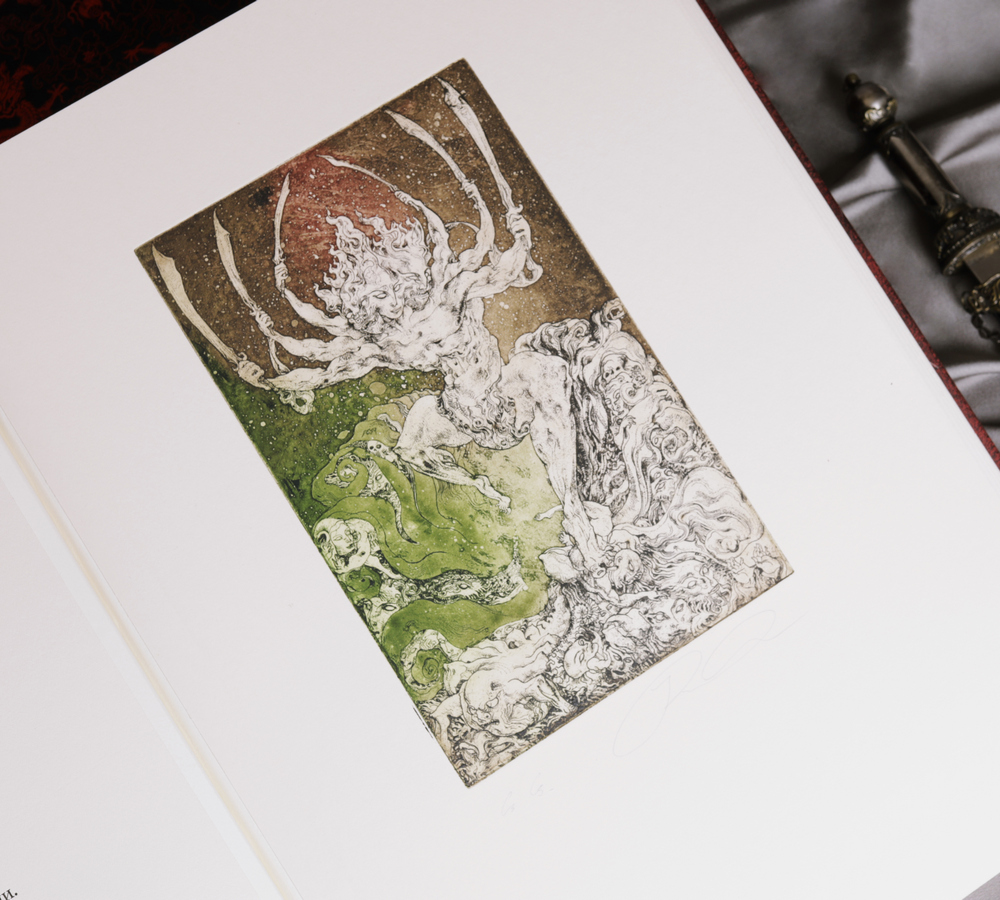
The book is embellished with copper reliefs also created by the artist, Sergei Kondrashkin. A menacing, belligerent dragon seems to wrap itself around the cover, protecting the contents from prying eyes. Its supple, scaly body on the back is continued on the front cover by a predatory muzzle. Blood-red garnets adorning the mythical creature’s pupils warn the reader with their glint — only someone worthy of being a true commander of men may open this book.

The book is protected by a case decorated with contrasting black and red Chinese silk with traditional embroidery. The luxurious fabric was brought specially from China for this publication, from a shop with a history going back over 500 years. The top cover of the case is decorated with a gilded bronze relief bearing the name of the author.
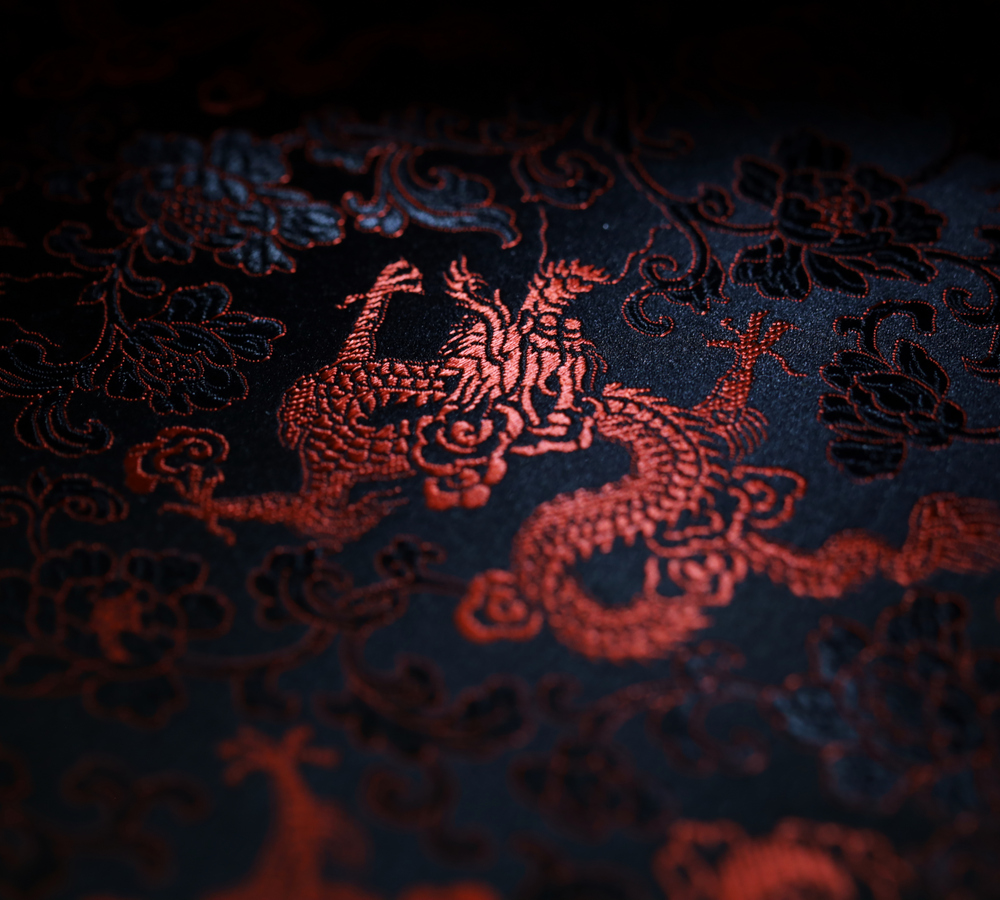
Additional information
Details of the creation of this masterpiece
-
Year of publication:2021
-
Number of pages:122 pages
-
Dimensions:550×370 mm
-
Paper:Fabriano (Italy), 280 g/m², handmade
The treatise The Art of War had a substantial influence on the whole of military practice in the East. It is reckoned to be the first text to contain precise guidance on the strategy and tactics for waging war. It was written by general Sun Tzu of the state of Wu during the reign of its king Helü (514-495 BC). It is Sun Tzu who is credited with Wu’s impressive military successes.
The Art of War has been quoted by leading military theorists in China from Wu Qi right up to Mao Tse-Tung. In the West, the book aroused constant discussions and passionate philosophical debates, capturing the attention of highly influential figures in a range of fields. The treatise, first translated by a French missionary around two and a half centuries ago, was part of Napoleon’s campaign library.

Work on the publication of Sun Tzu’s Art of War began in January 2020. The first copy was completed in May 2021.
Participants in the work on this publication:
Creator of the illustrations and copper reliefs on the cover — Sergei Kondrashkin
Scholarly consultant to the project and author of the Russian translation — Vladimir Maliavin
Design of the cover — Piotr Suspitsyn
Gilding of the relief on the cover — Pavel Yekushev
Layout — Evgeny Grigoryev
Printing of the Russian text — Ruslan Knyazev
Chinese calligraphy — Luo Lei
Printing of the etchings — Alexander Mikhailov
Binding work — Andrei Degtev, Andrei Kulikov
Proof-reading — Natalia Nesterova

The brilliant general’s all-encompassing ideas include the following principles:
1. War means losses. Therefore, the diplomatic approach to settling a conflict is extremely important.
2. Self-control. Emotional instability leads to disaster. A general should be restrained and trust in common sense.
3. Controlling the enemy, creating the opportunity for an easy victory. An army should always remain active, even when engaged in defence, so as to create and exploit a moment of tactical advantage.

4. The main thing in war is not good luck but possessing information.
5. Precise organization, discipline and obedient forces. When men are well trained, properly fed, clothed and equipped, they will fight fiercely.
The translation used in the creation of the book was made by the Sinologist Vladimir Maliavin, a Doctor of Historical Sciences.
The text of the treatise was printed on a 19th-century Dingler hand press.
The edition also includes original calligraphy created by a master of the Chinese version of that art form, Luo Lei.

The expressive, compositionally complex, multifaceted pictures reflect the scope of Sun Tzu’s military philosophy. The basis is the artist’s creative method is one of the four elements. Each of the illustrations is associated with an outburst. In place of fire intrinsic to war, Kondrashkin chose water. Belligerent dragons, serpents and sorcerers born of the watery element become the key to an emotional perception of the text, revealing the philosophical essence of Sun Tzu’s work: war is fire, but it is the rational thinker who emerges victorious — someone who has a feeling for the fiery element (the illustrations are framed with fire, as it were) yet does not succumb to it, being of a different sort.

The book is embellished with copper reliefs also created by the artist, Sergei Kondrashkin. A menacing, belligerent dragon seems to wrap itself around the cover, protecting the contents from prying eyes. Its supple, scaly body on the back is continued on the front cover by a predatory muzzle. Blood-red garnets adorning the mythical creature’s pupils warn the reader with their glint — only someone worthy of being a true commander of men may open this book.

The book is protected by a case decorated with contrasting black and red Chinese silk with traditional embroidery. The luxurious fabric was brought specially from China for this publication, from a shop with a history going back over 500 years. The top cover of the case is decorated with a gilded bronze relief bearing the name of the author.

Sun Tzu
THE ART OF WAR
Ancient China’s first treatise on warfare
Download presentation Download video presentation




